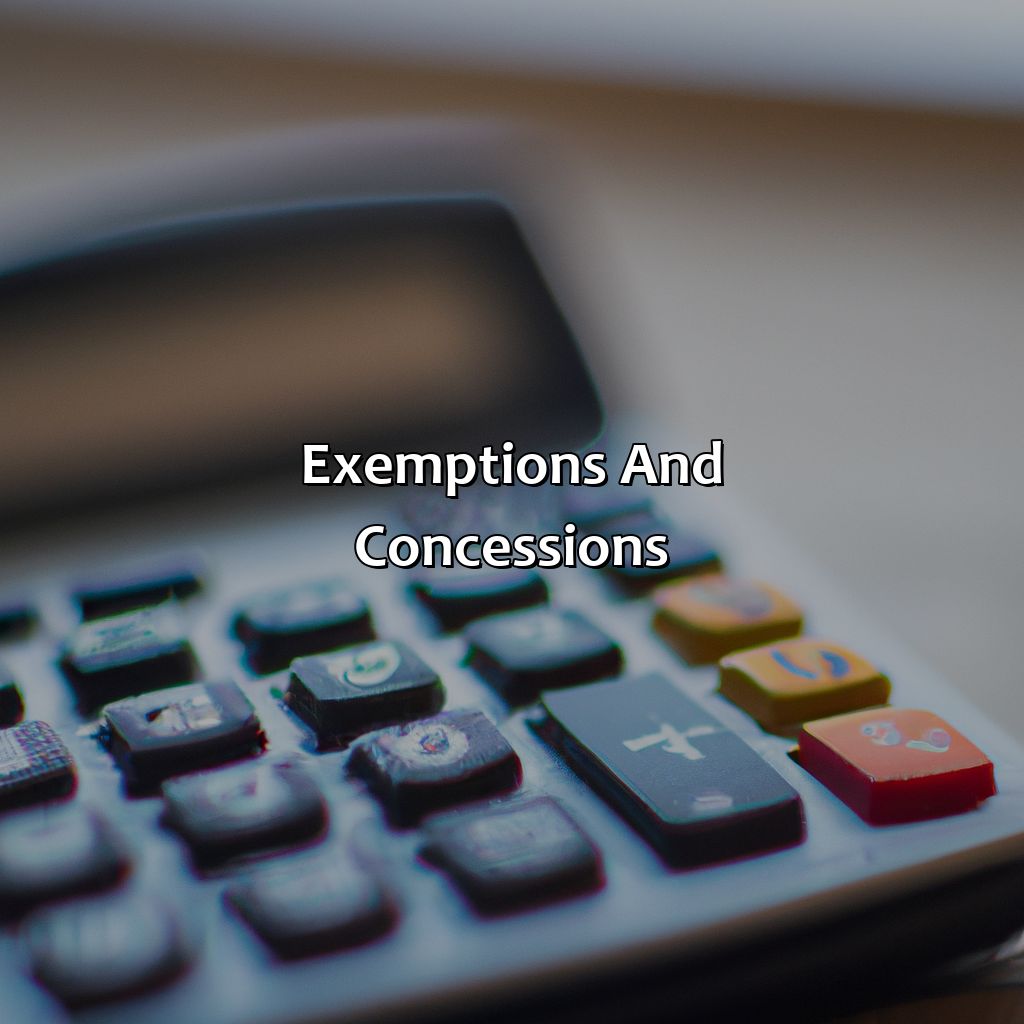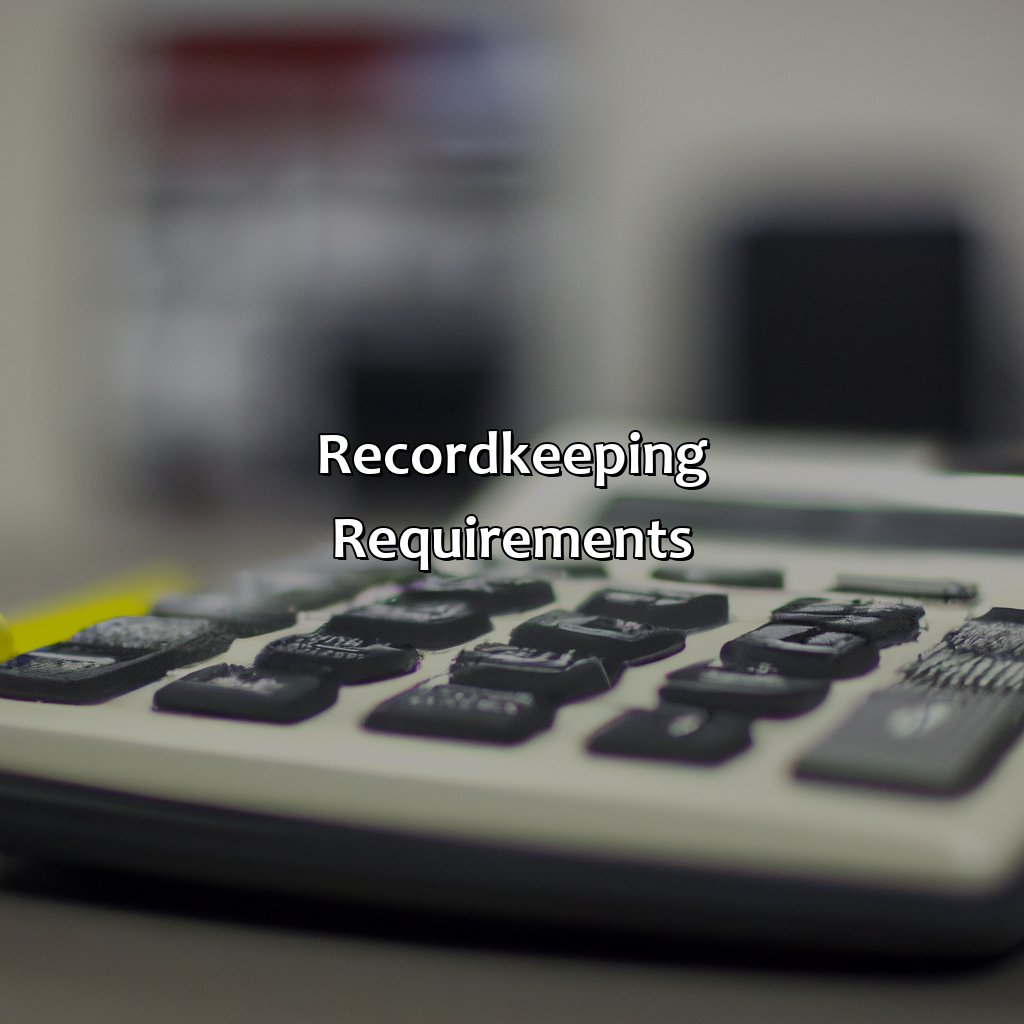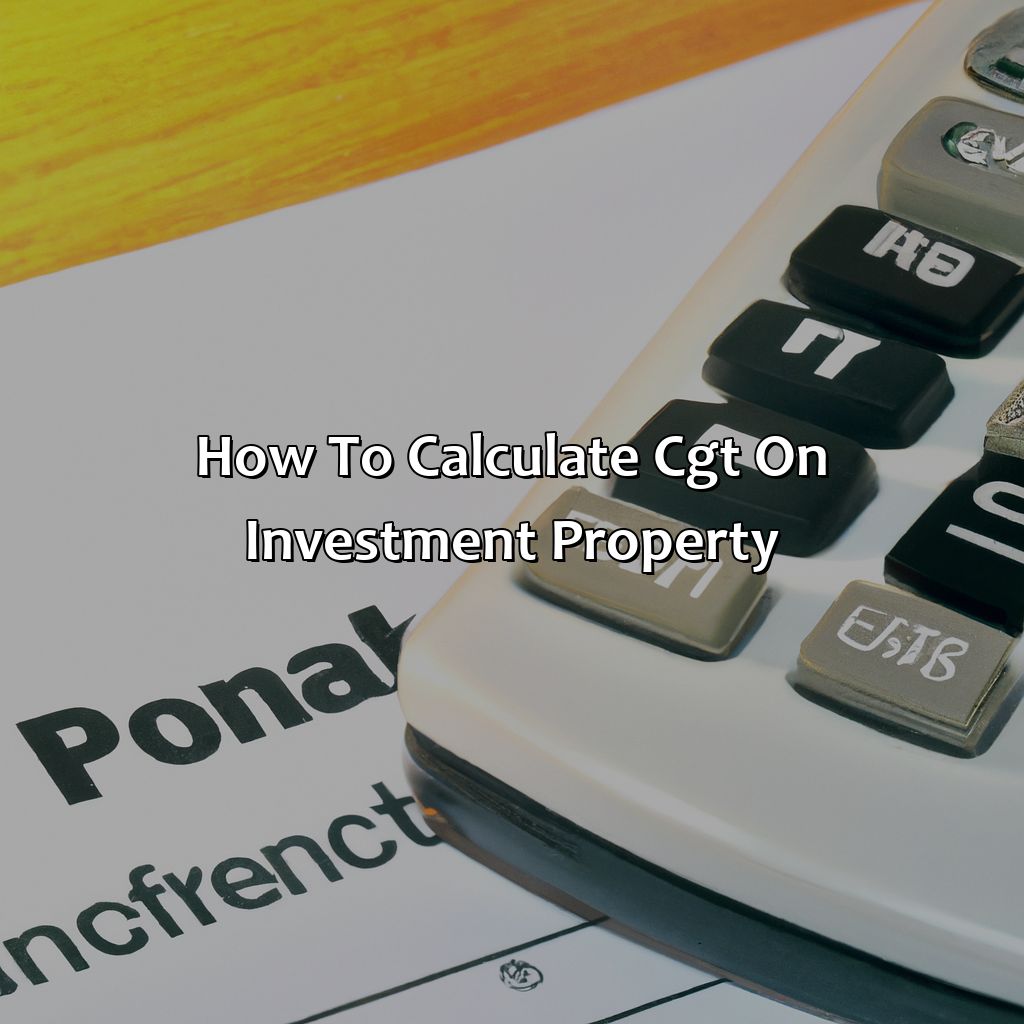How To Calculate Cgt On Investment Property?
Key Takeaway:
- Calculating CGT on investment property requires an understanding of the cost base, deductible expenses, and capital proceeds. It is important to keep accurate records of all transactions related to the property to ensure an accurate calculation of CGT.
- Exemptions and concessions can be applied in certain circumstances, such as the main residence exemption, the 6-year rule for rental properties, and small business CGT concessions. Understanding these exemptions and concessions can help to reduce the amount of CGT payable.
- Seeking professional advice from a qualified accountant or tax specialist can help to ensure a correct calculation of CGT and identify any potential exemptions or concessions that may apply to your investment property.
Do you want to know how to make the most of your investment profits? Understanding how to calculate capital gains tax (CGT) when selling an investment property is a key part of realising those profits. Read on to learn how to navigate the CGT calculation process.
Calculating CGT
Calculating capital gains tax (CGT) on investment property requires understanding the applicable rules and regulations. The CGT is calculated by subtracting the property’s purchase price from its sale price and then adjusting for various factors like improvements, depreciation, and expenses.
To calculate CGT, one needs to keep track of all relevant costs, including conveyancing and advertising expenses, legal fees, and stamp duty. It is vital to keep receipts and records to ensure all expenses are documented and can be used to reduce the CGT liability.
Understanding the rules and regulations regarding CGT can help minimize the tax impact on the investment property. For example, holding the property for more than one year may reduce the CGT liability as the 50% CGT discount applies to investment assets held for more than 12 months.
It is also important to consider the timing of the sale or disposal of the investment property to optimize the CGT liability. One may be eligible for certain CGT concessions or exemptions, such as the main residence exemption, small business CGT concessions, or foreign resident CGT withholding regime, depending on the circumstances.
In summary, calculating CGT on investment property requires an understanding of the rules and regulations, keeping accurate records, and considering the timing of disposal to optimize the tax liability. By following these suggestions, investors can minimize their CGT liability and maximize their returns.

Image credits: retiregenz.com by Yuval Woodhock
Exemptions and Concessions
When it comes to tax implications on investment property, certain exemptions and concessions may apply. These can assist in reducing the amount of Capital Gains Tax (CGT) payable upon sale of the property.
The following table outlines common exemptions and concessions that may apply to investment properties:
| Exemption/Concession | Description |
|---|---|
| Main residence exemption | No CGT payable if the property is your main residence |
| 50% discount | Applies after holding the property for more than one year |
| Small business CGT concessions | Available for eligible small business owners |
| Foreign resident exemption | Limited CGT liability for non-resident property owners |
It’s important to note that there may be further exemptions and concessions available, depending on individual circumstances. For example, if the property was inherited, additional concessions may apply. It’s advisable to seek professional advice to determine the specific exemptions and concessions applicable to your situation.
Pro Tip: Keeping accurate records of all expenses related to the property can ensure maximum deductions and minimize CGT liability.

Image credits: retiregenz.com by James Jones
Record-Keeping Requirements
Proper maintenance of financial records is vital to calculating capital gains tax (CGT) on investment property. These records should include all relevant information pertaining to the property’s purchase, sale, and any expenses incurred during ownership.
The following table presents the record-keeping requirements for calculating CGT on investment property:
| Type of Record | Description |
|---|---|
| Purchase Documents | Contracts of sale, conveyancing documents, mortgage documents, and settlement statements |
| Expense Documents | Receipts, invoices, and bank statements for any expenses incurred during ownership, such as repairs and maintenance, rates and insurance, and property management fees |
| Sale Documents | Contracts of sale and conveyancing documents for the sale of the property |
| Valuation Records | Records of the property’s value at purchase, during ownership, and at the time of sale |
| Rental Income Records | Records of the rental income received during ownership of the property |
It is important to note that these record-keeping requirements may vary depending on the specific circumstances of the investment property. For example, if the property was owned jointly with another person, records of the ownership percentage and any agreement between the owners should also be kept.
Pro Tip: Keeping detailed and accurate records throughout the ownership of an investment property can save time and money when calculating CGT and help ensure compliance with tax regulations.

Image credits: retiregenz.com by Adam Washington
Seeking Professional Advice
Professional Guidance for Accurate CGT Calculation on Investment Property
Maximizing the returns on investment properties and minimizing tax implications can be challenging. Effective calculation of capital gains tax (CGT) is crucial to avoid miscalculations and subsequent penalties. Seeking professional guidance can help save money while ensuring compliance with changing regulations.
Professional accountants, tax advisors, and consultants offer expert knowledge to facilitate accurate CGT calculation. Professional advisors analyze tax implications in depth, including costs associated with buying, selling, or renovating investment properties. They ensure that all aspects of the CGT calculation are duly considered to minimize the taxable capital gains.
For instance, professional advice can help explore exemptions and offsets that minimize taxable capital gains. They can assist in determining the applicable tax rates and identifying deductions, such as expenses related to renovations and repairs of the property. In addition to providing accurate CGT calculations, obtaining professional advice can help keep pace with the ever-changing tax regulations. Professional advisors stay up-to-date with tax laws and regulations and provide the necessary guidance to comply with them.
To ensure the right guidance in CGT calculation, it is crucial to seek the services of tax professionals who specialize in investment property-related taxation. Hence, obtaining professional advice can provide proper and considered advice, ensuring accurate CGT calculation, and avoiding costly errors.
Don’t miss out on potential savings in CGT! Seek professional guidance today to ensure optimum investment returns and compliance with tax regulations.

Image credits: retiregenz.com by James Jones
Five Facts About How to Calculate CGT on Investment Property:
- ✅ Capital Gains Tax (CGT) is a tax on the profit you make when you sell an asset that has increased in value. (Source: ATO)
- ✅ Investment properties are subject to CGT when sold, including those held by foreign residents. (Source: ATO)
- ✅ The CGT calculation involves subtracting the purchase price, including associated costs, from the sale price, including associated costs, and calculating tax on the resulting amount. (Source: ATO)
- ✅ CGT can be reduced through the use of exemptions, such as the main residence exemption or the 50% discount for assets held longer than 12 months. (Source: ATO)
- ✅ It is important to keep accurate records of all property-related transactions to ensure accurate CGT calculations and potential tax savings. (Source: Smart Property Investment)
FAQs about How To Calculate Cgt On Investment Property?
How do I calculate CGT on investment property?
Calculating CGT on investment property involves subtracting the original purchase price and associated fees from the final sales price, then deducting any capital improvements made to the property. The resulting figure is the capital gain, which is then subject to applicable tax rates.
What tax rates apply to CGT on investment property?
The tax rate for CGT on investment property varies depending on the type of property, the length of time it was owned, and the owner’s income. Generally, the tax rate ranges from 15% to 45%.
What is the 6-year rule for CGT on investment properties?
The 6-year rule allows investors to exempt their investment property from CGT when it is sold, provided that the property was their main residence at some point during ownership. This exemption applies for up to six years after the property ceased to be their main residence.
What is the effect of negative gearing on CGT?
Negative gearing can reduce the taxable income from an investment property, which may in turn reduce the CGT liability. However, it is important to note that the CGT is still calculated based on the capital gain, regardless of any negative gearing benefits.
What is the difference between CGT and stamp duty?
CGT is a tax on the capital gain of an investment property, while stamp duty is a tax on property transactions. Stamp duty is paid by the buyer when purchasing a property, while CGT is paid by the seller when they sell the property at a profit.
Can I offset losses from an investment property against CGT?
Yes, losses from an investment property can be offset against CGT. However, it is important to note that any losses must be transferred to subsequent income years and cannot be used to reduce the gross amount of the capital gain in the current income year.


